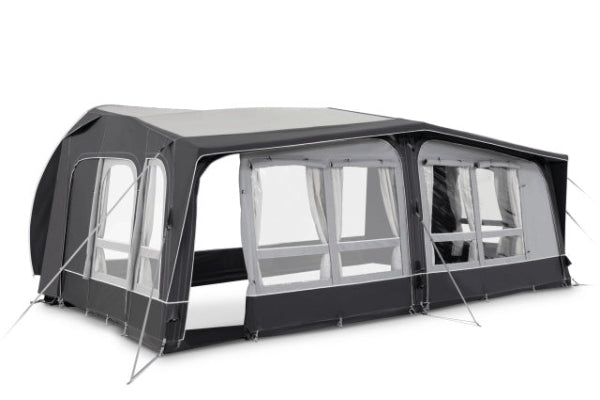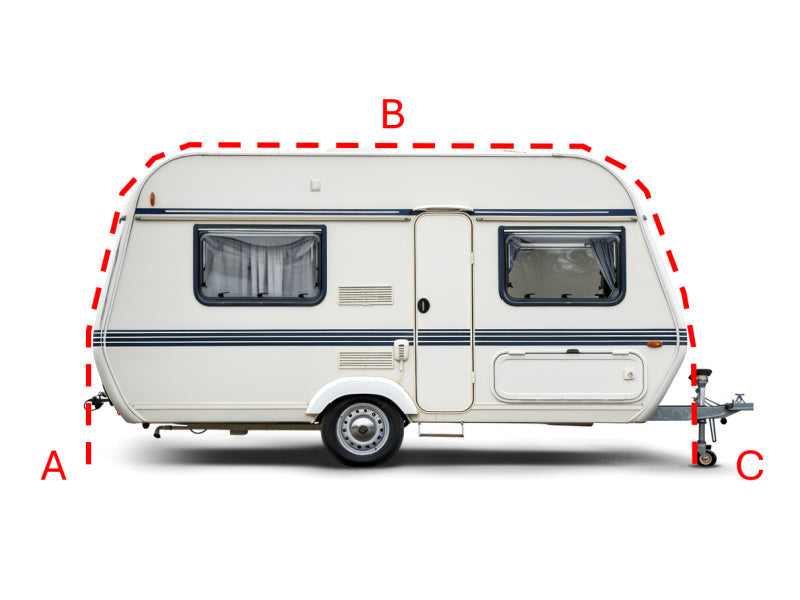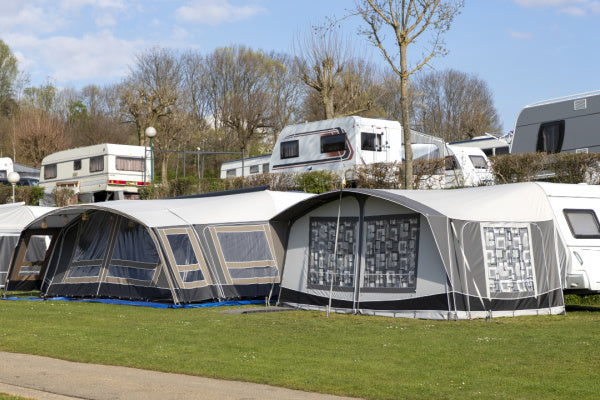Why Some Campsites Say No Awnings?
Ever wondered why your caravan awnings aren't welcome at certain campsites? It's not because they're party poopers! The short answer: safety and space management. From wild winds turning awnings into impromptu kites to keeping sites looking pristine, there's more to this rule than meets the eye. Let's unpack the reasons.
Understanding Campsite Awning Restrictions
Picture this: a peaceful campsite nestled among towering pines. The morning mist curls through the air while birds chirp their dawn chorus. Now imagine that same scene cluttered with a maze of awnings, tarps, and makeshift shelters stretching in every direction.

This visual helps explain why campsites need clear guidelines about outdoor structures. Awnings come in many shapes and sizes - from simple caravan attachments to elaborate popup gazebos and canopies.
Modern camping has evolved beyond basic tents and caravans. Today's outdoor enthusiasts often bring additional shelter options for comfort and convenience. Yet this evolution has prompted many campsites to establish specific restrictions.
The rules aren't arbitrary. They stem from years of experience managing outdoor spaces and ensuring visitor safety. Understanding these restrictions helps campers plan effectively and avoid disappointment upon arrival.
Safety Concerns
Safety stands as the cornerstone of campsite management. When it comes to awnings, several crucial factors influence site policies and regulations.
The British weather plays a significant role in these safety considerations. Unexpected storms can transform even well-secured awnings into potential hazards. Seasoned campers know all too well how quickly conditions can change, especially in coastal or mountainous regions.

Fire Hazards
Fire safety ranks among the top priorities for any campsite. Awning materials, despite modern fire-resistant treatments, can still pose significant risks.
The proximity of awnings to cooking equipment creates particular concerns. Even a small spark from a nearby barbecue could have serious consequences. Insurance companies often mandate strict fire safety protocols, which influence campsite policies about temporary structures.
Proper ventilation becomes another crucial factor. Awnings can trap heat and cooking fumes, creating potentially dangerous situations in enclosed spaces.
Wind Damage Risks
British weather's unpredictability makes wind damage a serious concern. Strong gusts can transform awnings into dangerous projectiles within seconds.
Recent years have seen numerous incidents where unsecured or poorly maintained awnings caused significant damage. These structures can collapse suddenly, potentially injuring nearby campers or damaging vehicles and equipment.
Coastal campsites face particularly challenging conditions. Sea breezes can quickly escalate into strong winds, making awning restrictions especially important in these locations.
Visual Impact and Aesthetics
The visual appeal of a campsite significantly influences visitor experience. Excessive artificial structures can detract from the natural beauty many seek when camping.
Traditional camping emphasises connection with nature. Too many awnings create an urban feel, diminishing the outdoor experience. This aspect particularly matters in areas of natural beauty or historic significance.
Professional campsite photographers often note how awning-free sites photograph better, attracting more visitors. This marketing consideration influences many site policies.
Space Limitations
Space management requires careful planning in any campsite. Each pitch must accommodate essential vehicles and equipment while maintaining safe distances between units.
Adding awnings can dramatically reduce available space. This affects not just individual pitches but the entire site layout. Emergency access routes must remain clear, and service vehicles need adequate room to manoeuvre.
Traditional pitch sizes weren't designed for today's larger units plus awnings. Many sites face the challenge of balancing customer comfort with practical space constraints.

Campsite Rules and Regulations
Clear guidelines help maintain order and ensure fairness. Posted rules typically cover:
-
Maximum structure sizes
-
Permitted materials and designs
-
Installation requirements
-
Weather-related restrictions
-
Emergency procedures
These regulations stem from practical experience and legal requirements. Local planning permissions often influence what structures campsites can allow.
Modern camping demands flexibility from both site operators and visitors. Alternative shelter options often exist within site guidelines. Pop-up gazebos or specially designed windbreaks might offer suitable compromises.
Understanding these restrictions helps campers prepare appropriately. Checking site policies before booking prevents unexpected issues upon arrival.
The future of camping continues to evolve. New materials and designs might eventually address current safety concerns. Until then, respecting site restrictions ensures everyone's camping experience remains positive and safe.
Successful camping trips rely on good preparation and understanding. Knowledge of site restrictions helps campers pack appropriately and avoid disappointment. This awareness contributes to smoother check-ins and more enjoyable stays.
Remember: these rules exist to protect everyone's camping experience. By following site guidelines, campers help maintain safe, attractive, and well-managed outdoor spaces for all to enjoy.
Other content you might like:
- Caravan awning not rolling up straight
- Caravan awning not retracting
- Caravan awning not locking
- Caravan awning on hardstanding
- Caravan awning in high winds
- How to secure a caravan awning in high winds?
- How do you tie down a caravan awning?
- When should I take my caravan awning down?
- How to stop caravan awning flapping?





Leave a comment